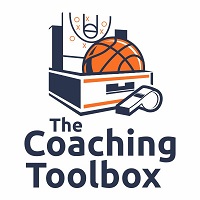
These are some of the notes that I took from a presentation by Alan Stein at a PGC/Glazier Basketball coaching Clinic in Chicago.
Alan Stein on Basketball Performance Training
- Players have higher priorities than training. They can remember about 3 things on training, then it is overload.
- As coaches, we must exercise selection in our administration of our training programs.
- Basketball Performance Skills are built brick by brick, not in a short period of time. If every brick is laid perfectly, you have a sound wall. If they aren’t laid correctly, all you have is a pile of bricks.
- Every rep of every drill and every workout is a brick.
- Stay focused on the important areas.
- Screen, prioritize, prescribe
- Be time efficient with your program, training is a small piece of the puzzle.
- There is no such thing as perfection, but that is the goal.
- Basketball isn’t a perfect game.
- Basketball is a game played with bursts of high intensity and then brief rests (fouls, timeouts, dead balls, free throws, etc..). Your workout regiment should mirror that.
- Make your workouts productive. Get your players to buy in, then get them results that they can see and feel. Once you have them hooked, they will give you high focus and high effort.
- Age appropriate. Evaluate stages (of physical development) rather than ages.
- Basketball training is not just lifting weights.
- Training is much bigger than only strength and conditioning
- Young players need training on how to start, stop, jump, and land most quickly and safely.
- The movement patterns are similar in youth basketball all the way up to professional basketball.
- The training program must be comprehensive–Alan is a performance coach, not just a strength and conditioning coach.
- A comprehensive program involves testing & assessment, improving performance, reducing injury, inspiring progress
- In basketball, it is not important to determine who the strongest player on the team is.
- Players who have the highest level of strength aren’t the best basketball players. Kevin Durant was 68th out of 70 in bench press at the NBA combine prior to being drafted. Short arms are an advantage in weightlifting. Long arms are an advantage in playing basketball.
- We are all born with different abilities
- The goal is to determine where they are at the start of the program and track the improvement of each individual.
- Assess and Identify each player’s needs and monitor their progress
- Asymmetry (For example, one leg is stronger than the other leg. Another example is the front being stronger than the back) is a leading cause of injury.
- The #1 cause of injury is a pre-existing injury.
- Proper training evens out asymmetry
- In basketball, skill is king.
- To improve strength and power, Alan recommends body weight squats, and front loaded squats. Do not do back squats.
- Improving athleticism–running, jumping balance.
- FG% is tied to balance.
- Alan believes that pre-season programs should be time efficient. Get them in, get them a great workout, and get them out.
- Work on starting, stopping, changing direction, accelerating, and decelerating.
- Steve Nash was a great athlete regarding balance, deceleration, and hand/eye coordination.
- Alan’s Complete Player Pyramid (click the link for an article he wrote on it) is Body-Skill-Brain-Hear/Motor.
- We can model heart, but that is not something that can be controlled.
- Your training program is a foundation.
- Purposeful, Practice, Progressive (and Regressive)
- Purposeful--Does it bulletproof players’ bodies against injury? Does it improve players’ capacity to perform skill? If you improve players athleticism, they can perform skills properly for longer periods of time. Just because something is hard does not make it purposeful. You can have a purposeful program and still have some fun. In Alan’s opinion, the 2 mile test isn’t purposeful. It requires different energy demands than basketball does.
- Practical–Do what you can with what you have.
- Progressive–To foster continual improvement, and regressive to help players who struggle.
- Your training program must be safe. You can’t prevent injuries in basketball, but you can take steps to reduce the number of injuries and the severity of those injuries. Training injuries are unacceptable. Alan is not big on the power clean or snatch.






